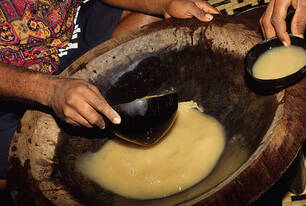Experiencing a kava ceremony: A step-by-step guide
Kava, a traditional drink made from the kava plant‘s roots, has been enjoyed in the South Pacific for centuries. It is known for its calming and relaxing effects, making it a popular choice for social gatherings and ceremonies. Participating in a kava ceremony can be a unique and memorable experience, but if you’re new to it, you may not know what to expect. In this article, we’ll provide you with a step-by-step guide to experiencing a kava ceremony.
Participating in a kava ceremony: A beginner’s guide
Before participating in a kava ceremony, it’s important to understand the cultural significance of the drink. Kava is often consumed during social gatherings and ceremonies, such as weddings, funerals, and festivals. It’s a symbol of unity and friendship, and it’s believed to bring people together peacefully and harmoniously.
If you’re interested in participating in a kava ceremony, the first step is to find a reputable kava bar or community where you can experience it. It’s important to respect the tradition and culture surrounding kava, so be sure to ask questions and follow any guidelines provided by the host or bartender.
A step-by-step walkthrough of a traditional kava ceremony
Once you’ve found a kava bar or community, it’s time to experience a traditional kava ceremony. Here’s a step-by-step walkthrough:
- Preparation: The host or bartender will prepare the kava by grinding the roots and mixing them with water. The mixture is then strained and served in a communal bowl called a tanoa.
- Welcome: The host will welcome everyone to the ceremony and explain the significance of kava. This is a good time to ask any questions you may have.
- Serving: The host or designated person will serve the kava to each participant in a small cup called a bilo. It’s customary to clap once before drinking and to say “bula,” which means “life” or “health.”
- Drinking: After receiving your bilo, you should drink the kava in one gulp and then clap three times. It’s important to wait for everyone to finish before starting another round.
- Closing: The host will close the ceremony with a final speech or prayer once everyone has had their fill. It’s customary to thank the host and express gratitude for the experience.
Participating in a kava ceremony can be a unique and memorable experience, but it’s important to approach it with respect and understanding. By following these steps, you’ll be able to fully immerse yourself in the tradition and culture surrounding kava. Whether you’re looking for a new social experience or simply want to try something new, a kava ceremony is definitely worth exploring.


